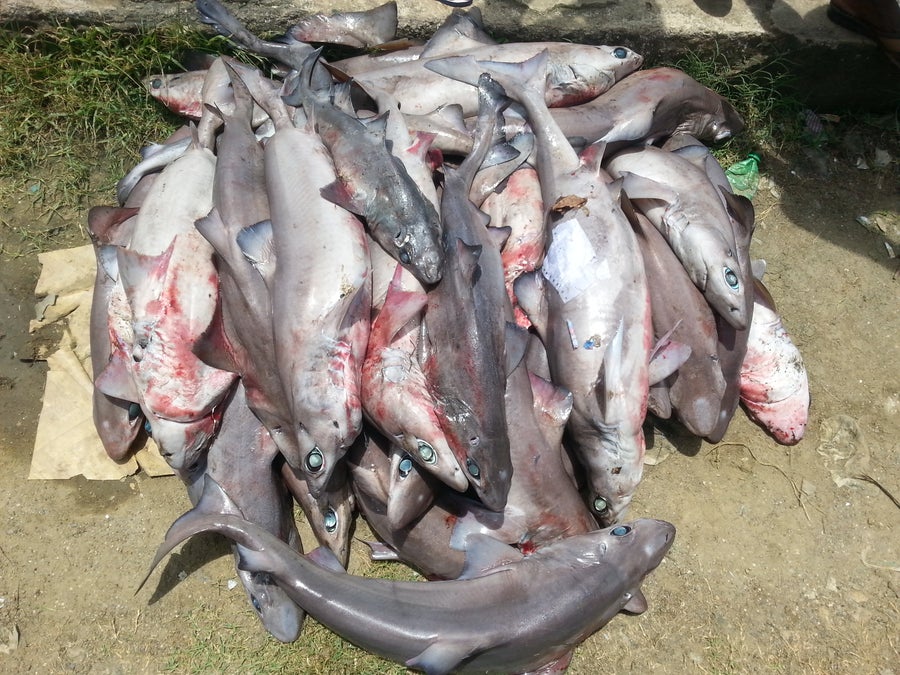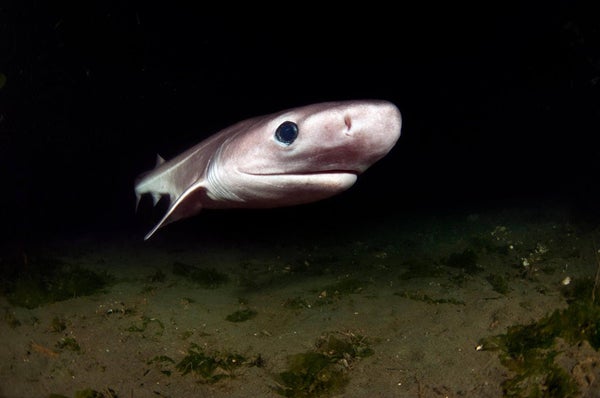The surging market for shark liver oil, found in products ranging from dietary supplements to cosmetics, is posing a major threat to deepwater shark species—those that dwell in the inky black waters at least 200 meters below the surface—which use adaptations such as bioluminescence to help them thrive.
Shark liver oil is used as a source of squalene, which is used in beauty products such as skin care items because it is an emollient and antioxidant. It can be found in dietary supplements, as well as in vaccines, where it helps stimulate the body’s immune response.
The rising demand for liver oil (along with meat) has driven shark fishing to the point where one in every seven known shark and ray species is threatened with extinction, according to a new study published on Thursday in Science. That’s a particular concern when it comes to species that frequent the depths because “about half of all sharks are considered deepwater species, and we are still finding new species of deepwater sharks all the time as we explore more of the deep ocean,” says the study’s lead author Brit Finucci, a fisheries scientist at New Zealand’s National Institute of Water and Atmospheric Research. Also of concern is the fact that these species “are very susceptible to overfishing because they have slow growth, late maturity and low fecundity—even more so than shallow water species. Some species take decades to mature and then give birth to only one or two pups every few years.”
On supporting science journalism
If you're enjoying this article, consider supporting our award-winning journalism by subscribing. By purchasing a subscription you are helping to ensure the future of impactful stories about the discoveries and ideas shaping our world today.
Deepwater sharks, once considered too inaccessible to be of interest to fisheries, are becoming more of a target because they contain higher levels of liver oil and because easier-to-reach species are becoming scarce. “As coastal fisheries become depleted, fishing effort has moved further offshore and into deeper waters,” Finucci says. The new analysis found fisheries are already targeting one third of the 60 known threatened deep-sea shark and ray species, and half of the species whose liver oil is traded are threatened with extinction. Those numbers are likely an underestimate because many countries do not record and report their deepwater shark and ray catch of at the species level.
“It’s good to see the conservation spotlight focus on deepwater species,” says Sonja Fordham, president of the conservation nonprofit Shark Advocates International, who was not involved in the new study. “It’s been at least 15 years since scientists sounded alarm bells over the serious depletion of deepwater dogfish and gulper sharks off Europe and even longer since the dire status of some deepwater skates first received international attention.”

Landings of gulper sharks (Centrophorus spp.) at Burmanallah in India’s island of South Andaman.
Credit: Francis Ebeena
Saving these fascinating and little-known animals from extinction will require strong conservation policies based on scientific evidence. “We need to identify areas that are important to deepwater sharks—like egg laying or mating grounds or areas where we know they aggregate—and protect them, providing deepwater sharks with refuges from human activities,” Finucci says. “And we need to increase national and international regulations for deepwater sharks. We need trade regulations to ensure that any deepwater shark product comes from legal, sustainable and traceable sources that don’t impact the long-term survival of a species.”
To date, most protections under the Convention on International Trade in Endangered Species of Wild Fauna and Flora (CITES), a treaty to protect endangered species, have focused on coastal and oceanic shark species, such as great white, oceanic whitetip and hammerhead sharks, because they were more well-known. “But since then CITES has come a long way and should finally be willing and equipped to implement trade regulations for this group,” Fordham says, referring to deep-sea species.
Finucci has a particular soft spot for the prickly dogfish (Oxynotus bruniensis), a shark featured on the cover of this week’s issue of Science. “I love their cartoonish dopey look and deceptively murderous appetite to consume the eggs (and embryos) of their shark relatives,” she says. “I’ve been half-jokingly referring to them as deep-sea pandas because of their appearance, sensitive biology and selective diet.”
Scientists and conservationists hope that this important and troubling new report will help to raise the alarm to protect the “deep-sea pandas” and other species. “There have been tremendous triumphs in shark conservation,” Finucci says, “but deepwater sharks have been left out of the conservation conversation.”
